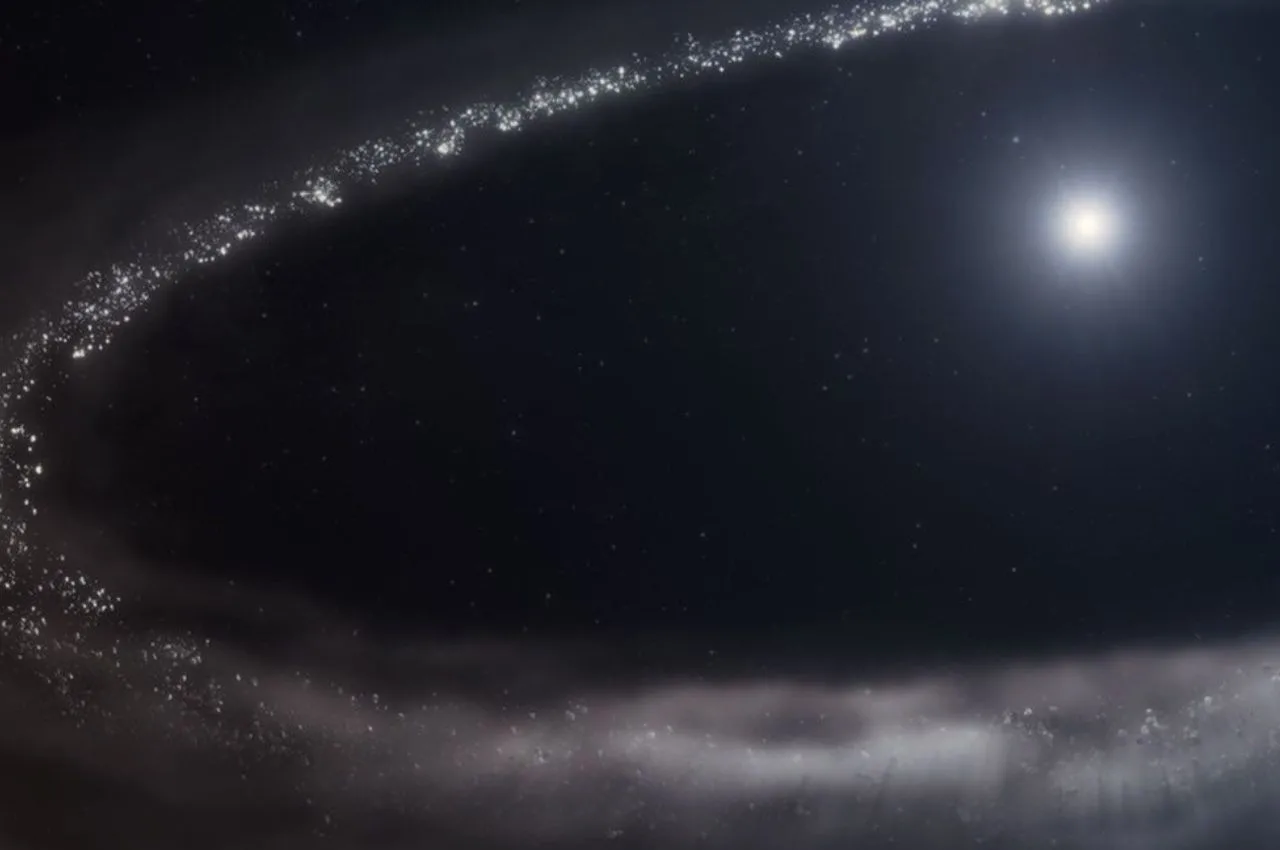In a first-of-its-kind discovery, NASA’s James Webb Space Telescope has detected frozen water in a planetary system just 156 light-years away — and it could change how we think about planet formation and the potential for life elsewhere.
The find comes from the young star HD 181327, nestled in the constellation Pictor. Surrounding it is a disk of cosmic debris — a dusty belt much like our own Kuiper Belt, home to icy objects beyond Neptune.
Using its ultra-sensitive NIRSpec instrument, Webb analyzed starlight filtering through the dust and gas. What it found? Definitive signs of water ice in the outer, colder regions of the disk — exactly where scientists would expect a system’s “snow line” to lie, mirroring our own solar system’s structure.
Why does this matter?
Because water — especially in frozen form — is essential to planet building. It acts as the “glue” in planet formation and may even deliver water to rocky worlds closer to a star. The presence of icy grains in this disk suggests that the ingredients for life-supporting planets could be far more common than we thought.
This is the first time frozen water has ever been directly detected outside our solar system, and it’s a huge win for the Webb telescope’s mission to explore alien worlds.
With every observation, Webb is not just peering into the cosmos — it’s rewriting our origin story.


